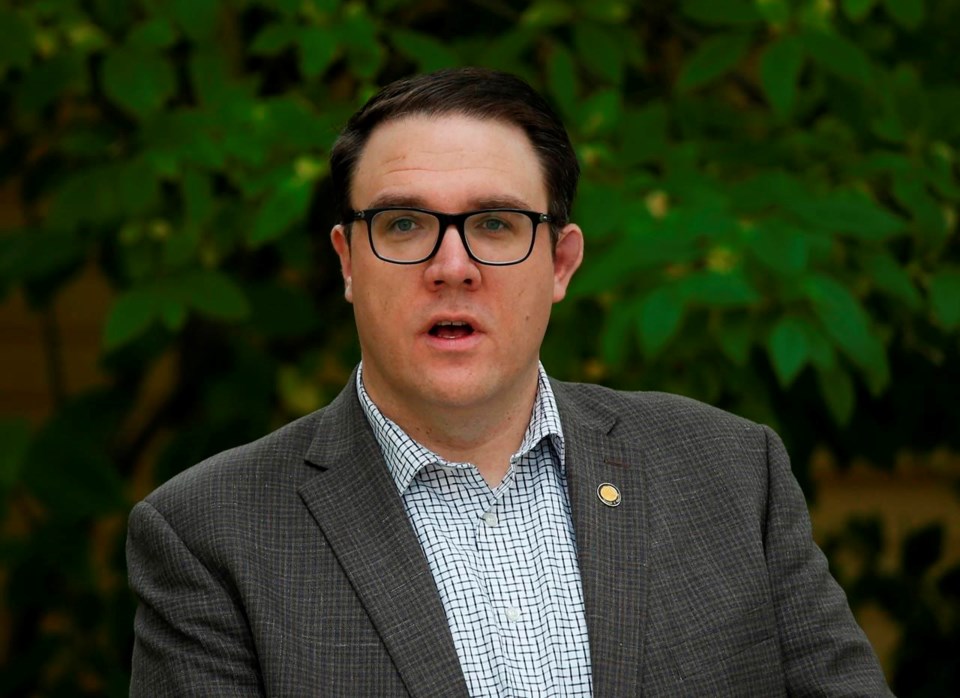EDMONTON — Alberta scientists and environmentalists say proposed legislation governing backcountry trails on public lands will thwart efforts to restore nature and add one more stressor to an already overtaxed landscape.
Environment Minister Jason Nixon has said the Trails Act, awaiting second reading in the legislature, will not close any trails and will lay out a path for new ones.
But parts of the province are already over legal thresholds for so-called "linear disturbances" — anything from a road to a cutline to a pathway. And some wonder how the bill's intent to open new access will mesh with Alberta's promises to reclaim increasingly scarce habitat.
"What's missing from the Trails Act is trail closures in sensitive wildlife habitat," said Mark Boyce, a University of Alberta biologist.
Nixon made a point of saying there would not be closures when he introduced the bill.
"This will provide an increase in designated trails that meet environmental standards," he said. "What this act does not do is close trails."
But at least four peer-reviewed, government-funded studies have concluded that road and trail density are already harming populations of animals such as caribou, grizzly bears and bull trout. That's especially true in the province's southwestern foothills and mountains, where off-highway vehicle use has long been popular.
The Livingstone-Porcupine Hills plan for the area, a legal document, stipulates no more than 0.4 kilometres of trail for every square kilometre in the most sensitive zones and 0.6 kilometres everywhere else. Government estimates already put the density in the area at between 0.9 to 5.9 kilometres for every square kilometre.
In other parts of the province, such as the Bistcho Lake region in the north, only six per cent of caribou habitat is undisturbed by linear features. Alberta has signed an agreement with Ottawa to try to bring that up to 65 per cent.
Stream crossings also create problems by muddying downstream waters and damaging fish habitat. Nixon said crossings will be upgraded and cleaned up, but the Livingstone-Porcupine area alone has 3,000 of them.
"You go on almost any quad trail, you aren't going to go all that far before you have to cross a stream somewhere," said Boyce, who uses an off-highway vehicle himself. "Most of those are big mudholes."
In an email, Alberta Environment spokesman Paul Hamnett said the proposed act won't affect efforts to reclaim old cutlines and will follow any caribou sub-regional plans "that are in place."
"By designating trails and drawing recreation use to the desired trail network, the Trails Act will help prevent damage to public land that may result from the use of unintentional trails," he wrote.
But few parts of Alberta have completed sub-regional plans and Devon Earl of the Alberta Wilderness Association said no new trails should be allowed before that work is done.
"We need to have those plans in place first. It needs to be based on science."
Alberta Environment, despite a request, did not release any research undertaken before the Trails Act was tabled.
Fisheries biologist Lorne Fitch said the bill is "absolutely contrary" to the Livingstone-Porcupine plan, completed after more than three years of consultations.
"To arrive at a (sustainable) threshold will require a tremendous amount of reclamation of trails, not building of new ones," he said. "And that's the case up and down the entire eastern slopes."
The bill has also been criticized for the discretion it gives the environment minister to designate trails and decide which user groups have access to them.
University of Calgary law professor Shaun Fluker has called the bill: "A statute that consists almost entirely of permissive statements which authorize a minister ... to enact all the substantive legal rules sometime later outside of the legislative process."
Nixon has not responded to repeated queries about whether he is a current or past member of an off-highway vehicle group.
Fitch said the Trails Act reflects an ongoing problem in Alberta conservation.
"This is the problem with people who don't understand ecological thresholds and just want more — more logging, more OHV activity, more coal mines, more random camping — and still have native trout and grizzly bear and caribou," he said.
"This is another cumulative impact in a landscape that is already crying out for a reduction in land use."
This report by The Canadian Press was first published Nov. 14, 2021.
— Follow Bob Weber on Twitter at @row1960
Bob Weber, The Canadian Press



